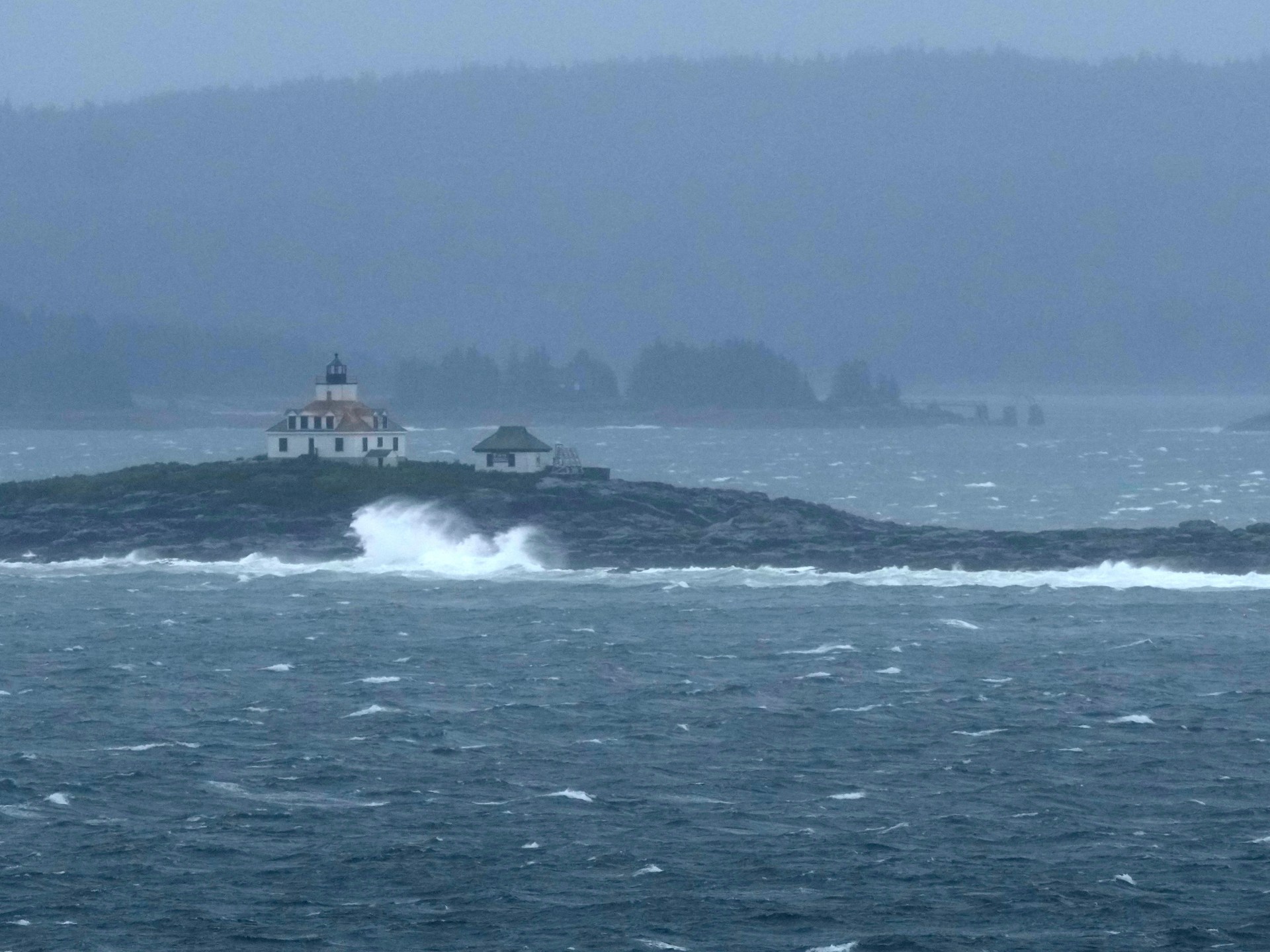Thousands without power as storm Lee begins lashing northeast US, Canada
The storm threatened to make landfall on Saturday with hurricane-force winds, dangerous surf and torrential rains.
Storm Lee which was downgraded to a post-tropical cyclone has begun lashing northeast United States and across the border in Canada, causing heavy rains and cutting power to tens of thousands.
Severe conditions were predicted across parts of Massachusetts and Maine in the US, and hurricane conditions could hit the Canadian provinces of New Brunswick and Nova Scotia, where the weakened storm was expected to make landfall later in the day.
Winds gushing at 130km/h (81 mph), coastal flooding and heavy rains were already occurring in parts of the New England region in the US and Atlantic Canada, the US National Hurricane Center (NHC) said in its latest advisory on Saturday.
Earlier, the Canadian Hurricane Center projected Lee would make landfall in Nova Scotia sometime after 3pm ADT (18:00 GMT) or later in New Brunswick with winds below hurricane force.
Parts of coastal Maine could see waves up to 4.5 meters (15 feet) high crashing down, causing erosion and damage, and the strong gusts will cause power outages, said Louise Fode, a National Weather Service meteorologist. As much as 120mm (5 inches) of rain was forecast for eastern Maine, where a flash flood watch was in effect.
“The worst of this storm will be reserved for Canada’s maritime provinces as it makes landfall on Saturday – mostly a wind event for Nova Scotia and a wind and rain combo for New Brunswick,” said Al Jazeera’s meteorologist Jeff Harrington.
“So by the numbers parts of New Brunswick will get to pick up 100mm of rain and winds in Halifax will gust to about 100km/h [62 mph], so that will certainly cause some damage,” he said.
Utilities reported tens of thousands of customers without power from Maine to Nova Scotia.
In anticipation, the administration of US President Joe Biden issued an emergency declaration for Maine, providing federal assistance for the state ahead of the storm.
“We encourage all of those in the path of this large and dangerous storm to remain alert,” White Press Secretary Karine Jean-Pierre told a news briefing.
Lee has been churning as a large hurricane over the Atlantic for more than a week, briefly threatening Bermuda but mostly harmless for anyone on land. It marks the second year in a row that such a powerful storm has reached Canada after Hurricane Fiona ripped into eastern Canada a year ago.
Lee lashed the US Virgin Islands, the Bahamas and Bermuda before turning northward, and heavy swells were likely to cause “life-threatening surf and rip current conditions” in the US and Canada, according to the hurricane centre.
Destructive hurricanes are relatively rare this far to the north. The Great New England Hurricane of 1938 brought gusts as high as 300 km/h (186 mph) and sustained winds of 195 km/h (121 mph) at Massachusetts’ Blue Hill Observatory. But there have been no storms that powerful in recent years.
The region learned the hard way with Hurricane Irene in 2011 that damage is not always confined to the coast. Downgraded to a tropical storm, Irene still caused more than $800m in damage in Vermont.




